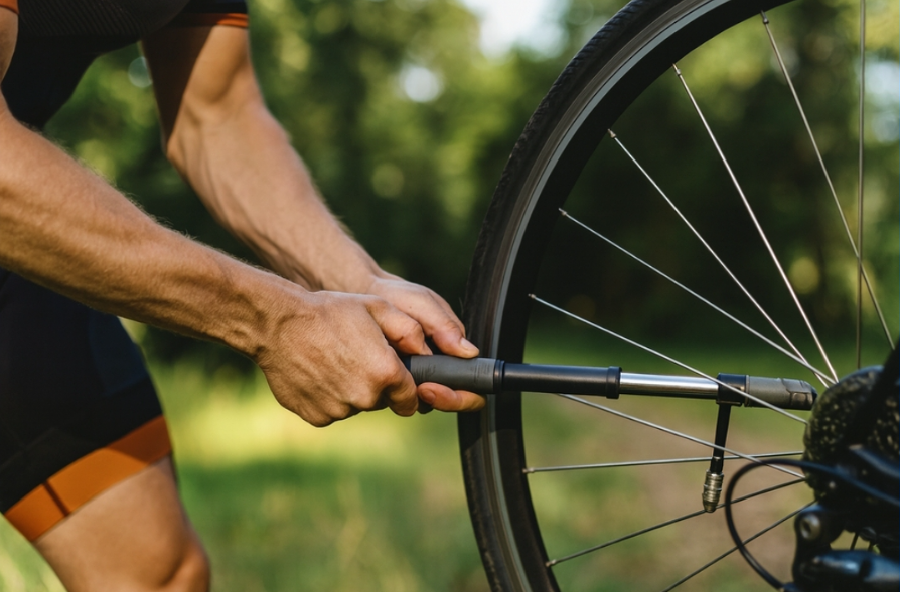Picture this: early morning, streets still quiet, no engines, just the soft click of a chain and the sound of your own breathing. No traffic jam, no gas money, no stress about parking. You’re moving under your own power. That’s already a win. Cycling isn’t only training for athletes — it’s transport, it’s freedom, and it’s honestly one of the cleanest ways to get from A to B compared to sitting alone in a car and burning fuel.
And then something else happens. What starts as “I’ll just ride a bit to wake up” slowly becomes real training. Your legs get stronger. Your lungs open up. Your posture improves. You feel more awake during the day. So yes, cycling helps pros before a game or a session, but it’s also for regular people who just want to feel better, recover smarter, and carry more energy into normal life — work, sleep, mood, everything.
The Endurance Engine
Cycling builds endurance differently than running or swimming. There’s rhythm in pedaling—a steady, meditative push-pull that keeps your muscles under tension for long stretches of time. Unlike short explosive movements, this kind of sustained effort trains your body to handle discomfort, manage oxygen better, and last longer.
And while we’re talking about endurance, there’s one small but vital piece of gear that keeps every ride smooth—the bike pump. You don’t think much about it until you need it, but trust me, the difference between a good and bad pump shows up instantly. There are mini pumps for emergencies on the road, floor pumps for regular home use, and even electric ones for those who love precision. I once bought a model from a Taiwanese company for my teenage son—it wasn’t an ad or a sponsorship, just pure curiosity—and we were both surprised by its build quality and how easily it inflated tires compared to cheaper versions. It taught me something simple: reliable tools make training enjoyable.
Think of it as teaching your engine to idle lower while still performing well. That’s why so many football players, basketball pros, and even sprinters include cycling in their off-season programs—it strengthens the heart and lungs without beating up the joints.
Legs of Steel (and More)
Of course, cycling works the obvious: quads, hamstrings, calves, and glutes. But there’s more happening under the surface. Your core stabilizes with every turn, your shoulders hold steady, and your grip strength improves from keeping balance and control.
Ever noticed a mountain biker descending rough terrain? They’re not just steering—they’re constantly bracing, absorbing impact, and shifting their weight. That’s a full-body workout, disguised as fun.
By the way, even small things—like checking your tire pressure with that trusty bike pump before a ride—train consistency. Little habits like that make great athletes. They care about the details.
The Recovery Secret
Here’s something interesting: cycling doesn’t just build strength—it helps you recover. Low-impact spinning increases blood flow without adding stress to joints or muscles. That’s why you’ll see pros hopping on stationary bikes right after matches or lifting sessions. It’s active recovery, done smart.
If you’ve ever felt that deep muscle soreness that makes even stairs feel impossible, try a gentle 30-minute ride. It’s not punishment—it’s repair in motion.
The Mental Marathon
Athletes talk a lot about mindset, but few realize how cycling trains it almost by accident. Long rides test patience. Hills test persistence. Wind tests humility. There’s no crowd cheering when you’re grinding up a climb—it’s just you and your breath, deciding whether to stop or keep going.
This quiet struggle builds mental resilience, a kind that carries over into everything—competitions, career, even relationships. The same focus that helps you pace through miles can help you stay calm under pressure in a completely different arena.
Cross-Training Power
If you’re already into another sport—say, football, tennis, or martial arts—cycling adds a new layer. It strengthens supporting muscles and tendons, enhances balance, and improves cardiovascular health. Plus, it’s safer than pounding pavement every day.
Many pro athletes say cycling gives them an “edge” without the burnout. It’s a way to stay conditioned while letting the body heal from the impact of harder sports. A balance of power and endurance.
Practical Takeaways
If you’re thinking of adding cycling to your routine, here’s how to do it right:
- Start with 2–3 rides a week. Mix short interval sessions with one longer endurance ride.
- Use proper gear. A good helmet, padded shorts, and yes—a reliable bike pump—matter more than you think.
- Track progress. Focus on how you feel, not just distance or speed.
- Stay consistent. The magic happens after the first few months when your body adapts.
The Bigger Picture
The real secret? Cycling teaches you rhythm—in training, in recovery, in mindset. It’s the kind of sport that gives back what you put in, multiplied. You push the pedals, the pedals push you.
So whether you’re a runner looking for balance, a weekend athlete chasing endurance, or just someone trying to feel stronger—get on a bike. Feel the ground blur under you, the wind in your face, the pulse of your own steady rhythm. That’s strength in motion.
And remember, before every great ride—check your tires, grab your helmet, and make sure that bike pump is ready. Because sometimes, the smallest tools support the biggest transformations.
Quick Tips
- Hydrate before, during, and after long rides.
- Mix in hill climbs—they build explosive power.
- Stretch your hips and hamstrings after every session.
- Don’t chase numbers—chase consistency.
Final Thought: Cycling isn’t only about sport, numbers, or medals. It’s daily life on two wheels. It’s choosing movement over sitting, fresh air over traffic, and control over stress. You build patience, you recover, you feel more alive. Yes, it makes you stronger as an athlete — but more importantly, it makes you stronger as a person.

